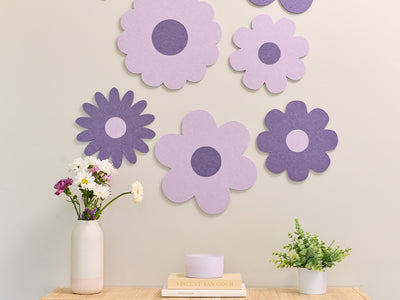Plastics come in many forms, offering some unique properties. We find plastics in cars, which is used to reduce weight and improve fuel efficiency. We find other plastics in our computers, including the one I’m typing on now, as well as felt tiles that can be used to decorate the walls in your home or office. Soft and supple plastics make up many of our favorite pieces of clothing, like the polyester fleece I often wear when hiking, camping, or skiing. Other plastics are used to keep medical devices sterile, and still others to preserve foods, preventing rot and waste.
Plastic is all around us everyday, and yet that word alone - Plastic - almost certainly caused a reaction when you read it, right? Good. We should all react to the P-word. But we should react in an informed way, with an understanding of when and how to use plastics, or any other material.
In this blog, we’re taking a closer look at the difference between single-use plastics and durable plastics and why it’s so important to make smart, eco-conscious decisions with every product (such as felt tiles) for your purchase.
Felt Right is your industry leader for state-of-the-art, eco-friendly felt tiles and felt pinboards. They offer felt tiles in a range of unique colors, patterns, and felt board designs to add warmth, color, and a sound-dampening quality to your home or office. They also believe that felt wall tiles need to be friendly to the environment and not just your walls. This is they utilize the latest sustainable practices and recycled plastic in our manufacturing process. Because at the end of the day, this planet is everyone’s home.
What are Single-Use Plastics?
Before we go any further, let’s start by answering the question, “what are single use plastics? According to the Natural Resources Defense Council (NRDC), single-use plastics are “goods that are made primarily from fossil fuel-based chemicals (petrochemicals) and are meant to be disposed of right after use—often, in mere minutes.”
Single-use plastics can be found all around us. Common single-use plastic items include water bottles, straws, plastic cutlery, packaging materials, food storage containers, Styrofoam containers, and so much more. Single-use plastics have become so prevalent in our world that it’s hard for most of us to imagine going a day without using them. While some plastic products are essential, such as the plastic used to make surgical gloves, a 2017 study revealed that over half of our single use plastics come from just plastic packaging, which most would agree is not an essential item.
What are Durable Plastics?
I am an ardent environmentalist, an unabashed tree hugger in the literal and figurative senses. I’m a veteran sustainability professional, having dedicated more than 30 years to protecting Planet Earth. I cherish this place. I also understand and embrace that there are some practical uses for plastic, while there are many others I firmly discourage. And for full disclosure, I have spent almost a decade working with plastics manufacturers, developing their sustainability programs.
With that fully disclosed, it’s time to cut to the chase.
Durable plastics have a role to play in our modern lives and our goals of sustainability. Take special note of the key descriptive word I just used: durable. Well-designed products made from durable plastics have unique properties, such as being lightweight, impact resistant, cleanable, and even sound-absorptive. They can be made from recycled contents, such as used water bottles, and can be designed to be renewed or recycled themselves, at the end of their useful lives. They can be colorful, non-toxic, and out-perform other materials in many applications.
Plastics are very much like wood, steel, cotton, or any other materials, in that we should select the materials that will perform best and be most durable in our intended use. If you want to build a long-lasting, eco-friendly home, then steel would be a better material than plastic for your nails. Conversely, steel would be a poor choice for sound absorption, while some plastics may perform very well as sound absorbing panels and with high durability.
So Why all The Negativity Around The P-word?
Simply put, plastic is far too often associated with single use. This is a huge problem, as most products’ environmental impacts originate from the extraction of limited resources and from the energy used in manufacturing. That means by the time you buy a product, most of the damage is already done. When you dispose of an item used only once, (regardless of what it’s made of) all of the precious resources used in its development suddenly go to waste. And when you buy more of that single-use item, you multiply all of the environmental impacts--each and every time.
That’s why it’s so important to choose products and materials wisely, ones that will perform to your needs, and be durable for the long term. It’s how you can easily achieve the most important and first “R” in Reduce, Reuse, and Recycle.
And, yes, there are a myriad of other problems that stem from single-use plastics, including microplastics in our food and water, ocean-pollution, toxic chemicals in some plastics, and impacts to our climate. I take these threats very seriously, I’ve been battling them throughout my entire career. This article is not intended to promote plastic, rather, I hope to shed light on the fact that all materials and products have impacts to be considered, and therefore, we should choose wisely.
Accept that every product you buy comes with a history of impacts.
3 Tips to Reduce Your Impact Using Plastics
Those impacts can be positive or negative for our planet and ourselves. Luckily, the good news is that you get to choose! It’s pretty simple to do your part to change the world for better by making smart choices on how you use plastic in your everyday life.
Here are a few tips:
-
Avoid single-use plastic products and materials by selecting for durability and performance (products like felt wall tiles for the decor in your home or office). In the end, you’ll save money and reduce negative impacts.
- Buy used products or those made from recycled contents, and be sure to recycle or reuse after use, to help build a circular economy.
- Support businesses that use renewable energy, actively reduce their climate impacts, and have honest, transparent, and meaningful sustainability initiatives.
Conclusion – Do you use the P-word?
With air pollution, shrinking natural habitats, biodiversity loss, and the vast quantities of plastics that wind up in our oceans, everyone needs to do what they can to protect our home and conserve our natural resources. While as an individual you may not feel like you can make an impact, the truth is that you can make a positive effect by the choices you make every day.
There are many convenient, and surprisingly simple, ways that you can reduce your reliance on single use plastics and all plastic products. Bring a reusable bag the next time you go shopping, buy used items whenever you can, and make eco-friendly choices when designing your home or office.
With Felt Right felt tiles, you can feel good about how you decorate your space with durable plastics. Developed with recycled plastic PET felt, each felt tile you buy contains roughly the equivalent of four recycled water bottles. This means that every year, felt tiles are preventing the equivalent of millions of water bottles from reaching our oceans. They also use the latest sustainable manufacturing processes to limit our impact on the environment.
Isn’t it time to do your part? Recycle, reuse, and do what you can to limit your single use plastic consumption. Then, head on over to the Felt Right My Design page to get started creating your very own felt pinboard made with recycled plastic.













